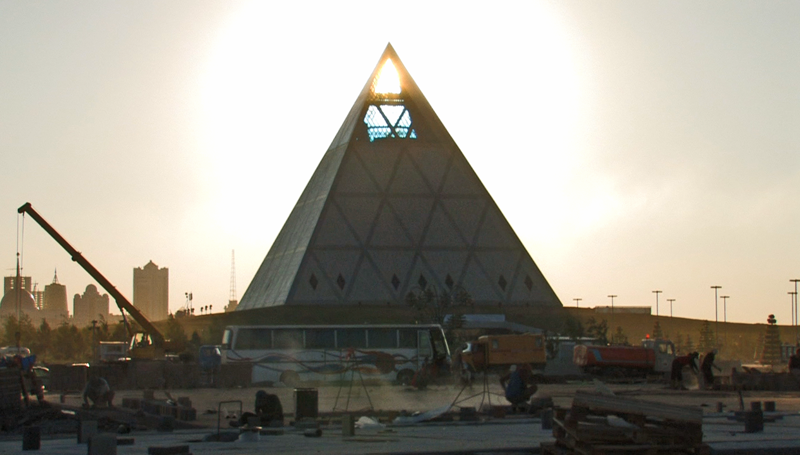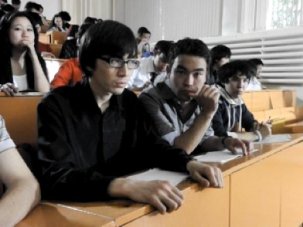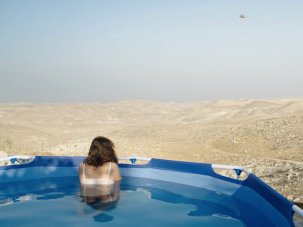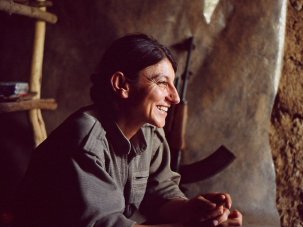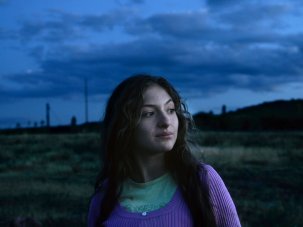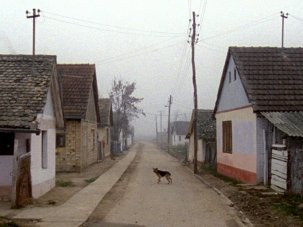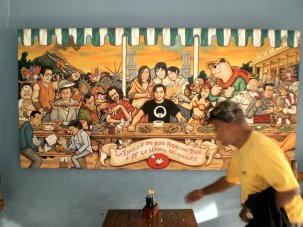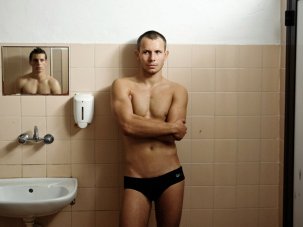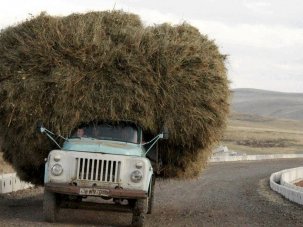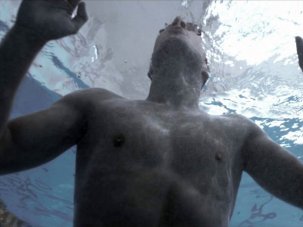“It seems that we may be doing the most unpopular thing,” says Nargiz Shukenova, co-founder of the Central Asian Documentary Festival (CADF), trying not to laugh. “Unpopular region, unpopular genre.”
The first Central Asian Documentary Festival ran 6–12 December 2018 in Almaty, Kazakhstan.
Situated in Almaty, Kazakhstan, the festival, which recently celebrated a remarkably successful first edition, is an unlikely offshoot of an already somewhat unlikely proposition; and by all accounts “an experiment” too. The CADF runs a month after Clique, the other film festival that Shukenova runs with her colleague Boris Baykov, which brings high profile arthouse films such as Birdman or The House That Jack Built to Almaty, alongside select documentary programming and special events. The new venture, focused entirely on Central Asian documentary, represents something different both for its organisers, and for the region’s filmgoing audiences.
Showcasing nonfiction films from or about Central Asia poses, as Shukenova suggested, a curatorial challenge, and indeed also a considerable risk. “We believe documentary is a great tool or instrument through which to express the voice of the region, to hear what is going on,” she says. “We wanted to develop documentary here, but we also needed to know what was happening first.”
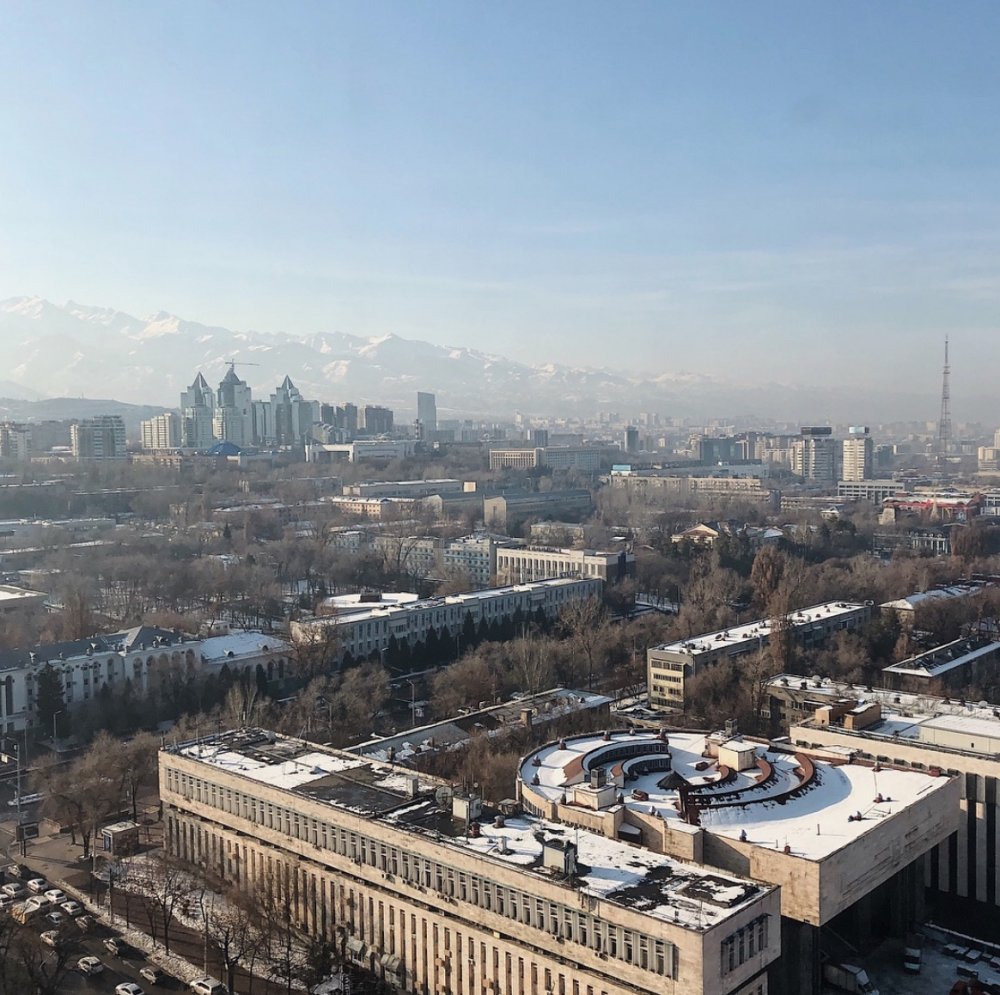
Almaty, home to the Central Asian Documentary Festival, as seen from the Hotel Kazakhstan
Credit: Matt Turner
Initially, it seemed, not much. An open call produced results, as did connections with regional embassies, country visits, and contact with international festivals, but it was continually challenging. Beyond the obvious issues of production financing, availability of equipment and restrictions on artistic freedoms, finding those films that do exist can be tricky. “It can be hard to find details about filmmakers in this region. In Uzbekistan, they have problems with the internet, for instance.” And elsewhere, things are tougher still. “We have no films from Turkmenistan, for various reasons. It’s a difficult grey area.”
Further, it is often “easier for visiting filmmakers to make films [in Central Asia] than those living here,” Shukenova notes. “For example, in Tajikistan and Uzbekistan, if you are from there you need permission to film. But if you are from Canada you just go there, observe what is going on and stay and shoot as long as you like.”
Programming a festival made entirely of films about this region offers a particular challenge, then, even before considering who might come to see them.Yet a programme emerged, offering a glimpse, across 24 competing films, of life in the former Soviet Republics of Kazakhstan, Kyrgyzstan, Tajikistan, Turkmenistan and Uzbekistan. CADF gives a voice to a region that most viewers will know very little about, and offers perspectives that are rarely seen on screen.
Some of the films about Kazakhstan itself were most interesting, often as much for the context of their exhibition as for the content of the works themselves.
Capital trailer
Russian filmmaker Maxim Pozdorovkin’s Capital (2010), made almost a decade ago but never before screened in Kazakhstan, was one of the strongest films in the competition, and also potentially the most contentious. The film cuts a cross-section of Kazakhstan’s new capital on the ten-year anniversary of its creation. President Nazarbayev made the switch from Almaty to Astana in 1997 and has worked continually on constructing his vision for the city ever since. As explained in an informative essay in the festival’s brochure about “the city and its role as a symbolic representation of the nation”, the new capital and its creator are somewhat analogous, with criticism of one tantamount to criticism of the other. Both Pozdorovkin’s film, and its inclusion, tread on dangerous ground.
An observational film that manages to be relentlessly satirical without ever needing to resort to overt critique, Capital moves between the city’s builders, administrators, tour-guides and journalists, watching as they work tirelessly to bring the rapidly expanding city into being. Such is the pace of a “place that has grown so fast that each day it is a new city” that construction workers are paid by the tile, laying down slabs in front of feet in time for a big procession celebrating the installation of a giant golden eagle atop the city’s presidential palace.
Despite tellingly lingering on some of the city’s more absurd images (e.g. a montage made entirely of terrible pop anthems competing to be the city’s official song, or repeated shots of confused tourists walking through a scale model version of the city), the film is necessarily respectful of the people involved with this “city in progress”, and empathetic towards those that retain hope for its future. “It will take some time,” a tour guide argues. “Culture is not a flowerbed you just plant; it has to grow on its own.”
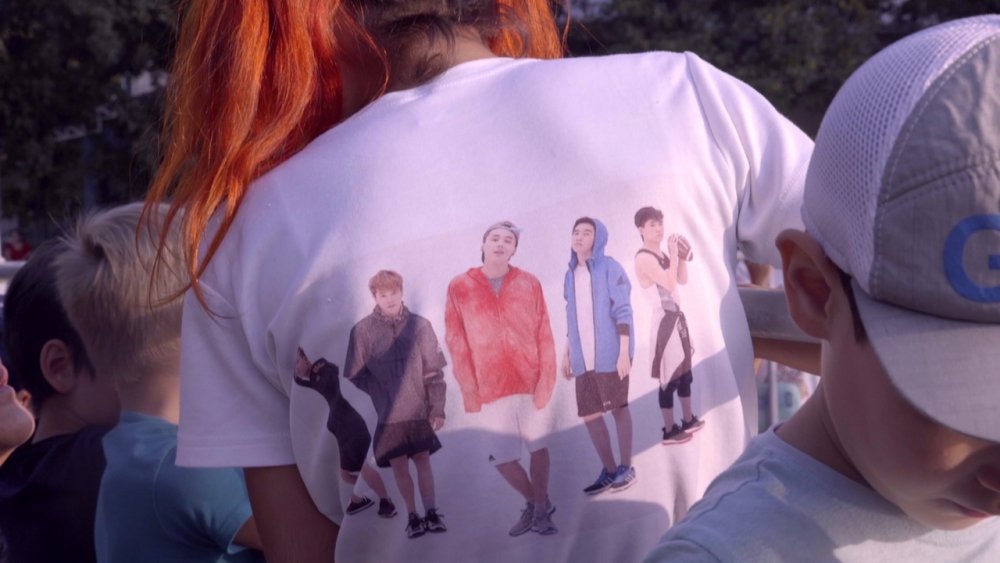
Face the Music (2018)
Other Kazakhstan focused films also tackled tricky topics. Katerina Suvorova’s oddly dense Face the Music (2018) focuses on K(azakh)-Pop boy band Ninety One, delving into the various social and cultural issues that their rise to prominence has provoked. Detested by much of the country’s older generation, who are irked by their modern musical style, “trivial” lyrical content and provocative hairstyles, the band straddle all sorts of conversations that are happening in contemporary Kazakhstan over language, heritage and identity, as well the growing intergenerational and urban-rural divides that can be seen region-wide. An unorthodox profile-doc, the film focuses entirely on protests against the band and the politics behind them, yet a packed out screening saw a full house of teen fans screaming throughout and the post film panel discussion ran longer than the film itself.
I’m Not Sick, I’m Gay trailer
Other documentary festivals could learn a lot from this level of local audience engagement, which was also seen at the screening of Alexej Getmann and Diana Harder’s I’m Not Sick, I’m Gay. “I’m 34, I’m gay and I don’t hide it,” announces the film’s lead subject Dennis Kokorin, a statement which might seem innocuous, did it not arrive immediately after a montage of vox-pop interviewees from across Kazakhstan unanimously, often vitriolically, expressing their contempt for homosexuality.
Looking to resist this, the film tracks Dennis’s efforts to organise support and community for LGBT people in Kazakhstan, despite the significant barriers this largely invisible group faces. “We live in a society which doesn’t solve problems, it simply marginalises them,” a friend of his says. This film, and the activist-led panel discussion that followed it, certainly bring them closer to the centre.
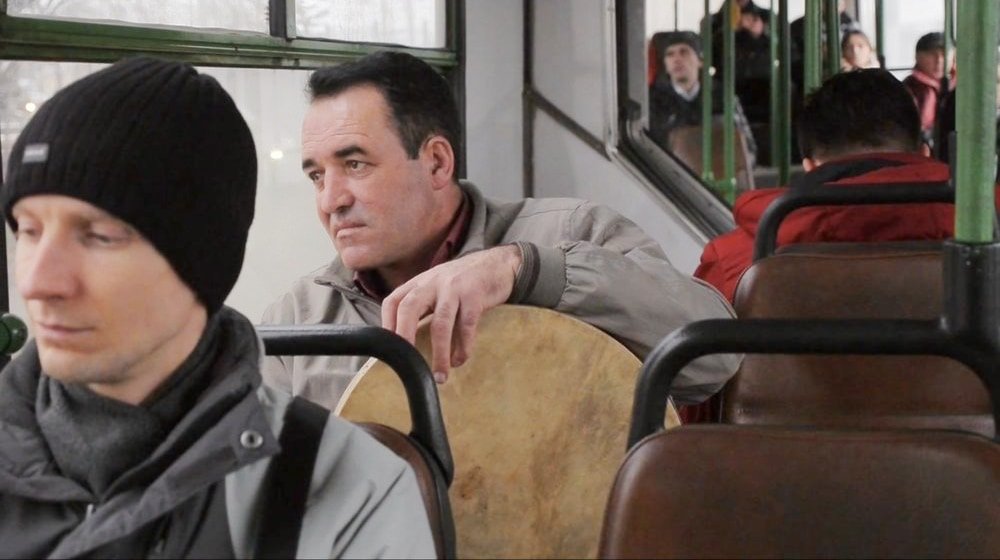
Songs of Abdul (2016)
Two films by Russian filmmakers with Tajikistani subjects, Anna Moiseenko’s Songs of Abdul (2016) and Denis Shabaev’s Not My Job (2015), both follow migrant workers crossing from Tajikistan into Russia in pursuit of work. In the former, Abdul works menial jobs in Moscow while performing traditional Pamirian music there to increasing acclaim. Moiseenko tracks him with a handheld camera, following him back to the mountains as he is reunited with his family for the first time in a decade.
Moiseenko’s material is rough, shot on low-grade video and cut together scruffily, but few protagonists are as compelling as hers, with Abdul grifting and grinding his way through life, cutting jokes to camera, and singing songs onscreen in interludes that effectively break up the film’s episodic format. The award he receives near the end seems a fitting payoff for his graft, but the mistreated, overlooked wife he’s left behind in order to win it may not agree.
Not My Job trailer
Not My Job’s equally captivating main character, Farrukh, has it even tougher. Living with his family in a ramshackle settlement in the fringes of New Moscow, he works hard and earns little, landing odd auditions for Russian dramas in the hope of realising his dream of becoming a star. “Why are there no famous people from Tajikistan?” he asks at one point, making his stake for a place in history, but reality hits him fast.
Shooting tightly over the shoulder with a rolling camera, cutting quickly over the years that he follows him, Shabaev makes a film of Farrukh’s life that takes the form of one of the dramas he’s auditioning for, capturing more raw dramatic material than any one life should contain. Despite all this hardship, the film’s humanity – comprising Farrukh’s contagious passion, and his family’s dedication despite his unreliability and naivety – keeps things grounded, until everything collapses.
Metal Bread trailer
The most impressive films focused on Kyrgyzstan. In Chingiz Narynov’s Metal Bread (2014), the Kyrgyz filmmaker trails Tatyana, an older ex-worker of Mailuu-Suu’s lightbulb factory – a source of employment for a third of the local population during the Soviet era, but all but derelict now – as she struggles to get by.
Filming in wide-angled pictorial panoramas, Narynov tracks her to the town’s fringes, where she sifts through broken lightbulbs to collect scrap metal to sell. Atop a small tower of off-white glass, amid a thick mist that swallows the surrounding mountains, she sits and tells her story. Like the film, it is slow and sombre with blunt beauty in between. “You keep going, then you fall over and that’s it.”
Djamilia trailer
Djamilia (2018) is tonally similar, a portrait of Kyrgz women made by French artist and ethnomusicologist Aminatou Echard. Taking Jamalia, a novel written in 1958 by famed Kyrgz author Chinghiz Aitmatov, as a talking point, Echard speaks to women across the country. In the book, a young woman flees a forced marriage to live with the man she loves, and most of the women interviewed agree upon is its continuing relevance, offering their own stories about the national situation for women, how they have suffered, or what they believe. “We could fill a whole book with our regrets,” one says, mournfully.
Disconnecting their testimony from its source, Echard overlays a mix of gorgeous Super-8 visual material showcasing the country’s various colours, a vibrant flickering flurry of fruit, crops, fields and faces. Though muted, the film is never miserable, even ending on a note of hope. Standing in front of “for a woman, the most dangerous place is home” graffiti, a bold young girl proclaims proudly: “We have a voice, and we want our freedom.”
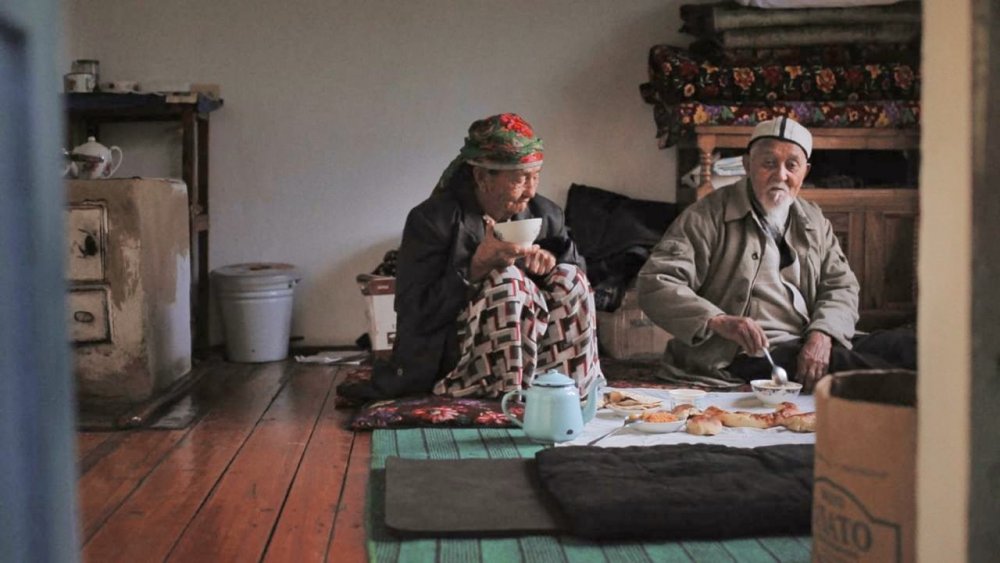
Harvest Moon (2018)
Best of all was Zaheed Mawani’s Harvest Moon (2018), a relatively simple film but a treasure nonetheless. It records the Kyrgyz custom of walnut collecting, following the Tagaev family over one summer as they head deep into one of the country’s oldest forests to find, shake down and store their yield, completing each stage of this process with due attention and care.
Filming almost entirely from a fixed position, often low to the ground, Mawani achieves a remarkable delicacy, capturing the forest’s muddy colours, its soft fluctuations in light and the minute gestures of those that inhabit it, both human and animal, with finesse and focus. Rain water is caught, walnuts are gathered, mother makes tea, a grandmother cuts her grandchildren’s hair, before the whole family gather fireside at night, telling stories of the forest and its past. National myths are rekindled, familial history is continued; slow rituals are completed, the seasons pass and repeat.
Looking back, it may seem apparent that there are plenty of good nonfiction films about Central Asia, but not so many from filmmakers from the region itself; and that getting a good selection requires looking further back in time than festivals traditionally tend to. Shukenova says she feels “sad, and kind of disappointed that there are not so many movies about us, from us. I want to see our perspective more.” It isn’t so simple though. “In this region, you cannot talk about certain things. We have our issues, and I don’t want to see anyone get hurt from what we do.”
Shukenova and her team had no grand ideas about the festival’s importance, but perhaps creating a space for a documentary community, for connections between filmmakers and for conversations with audiences, could be the first step towards creating some change. “I’m not sure if documentary is the way to solve these problems, but it is one way to start to speak about them. There is so much pain here and no one talks about it. I don’t know where starting to do that is going to lead.”
-
The Digital Edition and Archive quick link
Log in here to your digital edition and archive subscription, take a look at the packages on offer and buy a subscription.




